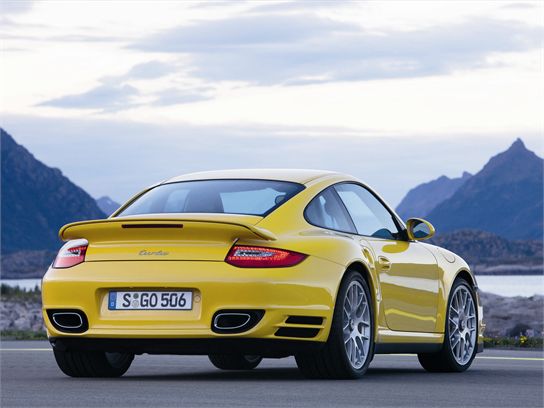Recent Articles
Popular Makes
Body Types
10 Things You Should Know About the 2010 Porsche 911 Turbo
When Porsche messes with a good thing, they make it better
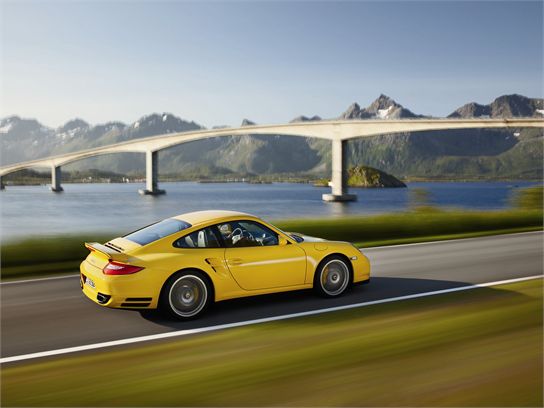
The 911 Turbo has been Porsche’s flagship sports car since it was introduced in 1974. Its combination of startling power, razor sharp handling and reasonable fuel economy have made it a viable alternative to Italian supercars, but its German engineering has made it far more reliable. Last redesigned in 2006 along with the “997” generation of the 911, the 911 Turbo enters its seventh generation for 2010. With a more powerful engine, Porsche’s high-tech PDK transmission, and some new technologies, this promises to be the best 911 Turbo yet.
We drove the new Turbo on twisty Portuguese back roads and a Formula One racetrack to find out if it delivers on that promise.
Page 2
The 911 Turbo is the best equipped and highest priced 911 (if you don’t count the low-volume GT3RS and GT2, which are thinly disguised race cars). A 2010 Porsche 911 Turbo coupe with no options will set you back a tidy $132,800 and the droptop cabriolet runs $143,800. That’s a lot, but the car is loaded with premium equipment. Advanced mechanical features include twin turbochargers, all-wheel drive, and adjustable shock absorbers. Interior niceties consist of leather upholstery, a navigation system, a 13-speaker Bose surround sound audio system, and much more. The options can send the prices tens of thousands of dollars higher, so choose wisely.
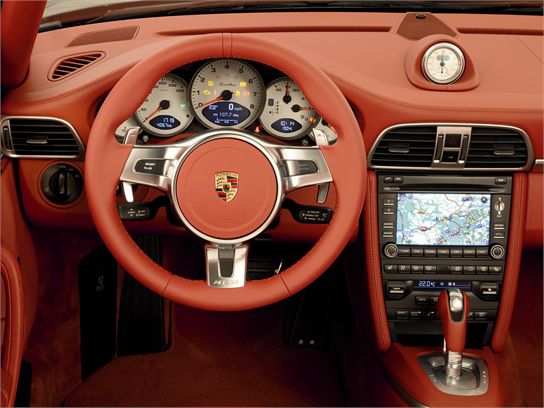
Page 2
While Porsche says this is the next generation of the 911 Turbo, the 2010 changes amount to a midcycle update more than an all-new car. Structurally, it is mostly unchanged, and the exterior gets only a few tweaks that include LED daytime running lights in place of front fog lights, titanium-colored front side air intakes, reshaped taillights that also feature LEDs, larger and more prominent tailpipes, and more aerodynamic side mirrors. All models retain the characteristic split rear wing. It automatically pops up at 75 mph and retracts when speed slows to 37 mph. And the cabriolet keeps a power cloth top that can open or close in 20 seconds at speeds up to 30 mph.
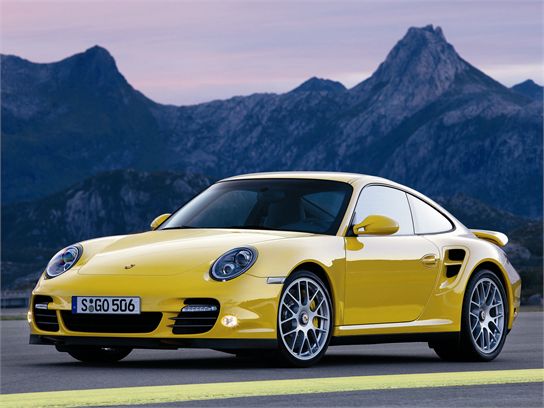
Page 2
The main differences between this generation of the 911 Turbo and the last are the engine and transmission. The twin-turbocharged, horizontally opposed six-cylinder grows from 3.6 to 3.8 liters while losing complexity. The parts count is down by 40 percent and the engine block and heads are comprised of four parts instead of 14. The addition of direct injection increases power and fuel economy, lessens turbo lag and reduces emissions. Porsche’s Variable Turbine Geometry returns. It allows the turbochargers to act like small turbos at low speeds when quick response is needed, and like large turbos at higher rev ranges to deliver maximum torque. All told, the new engine increases from 480 to 500 horsepower and torque jumps from 457 to 479 lb.-ft. That’s a lot of thrust.
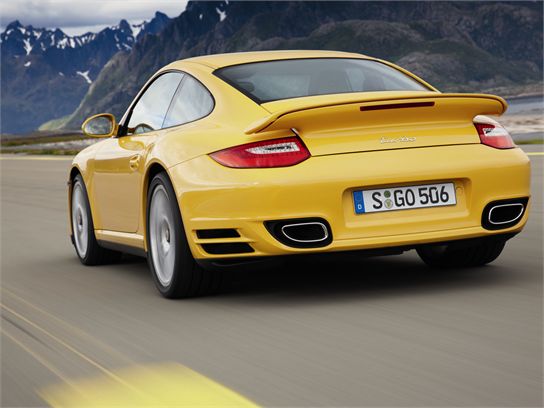
Page 2
The 911 Turbo comes standard with a slick-shifting six-speed manual transmission. Available as an option is the seven-speed Porsche Doppelkupplung (PDK) automated manual, which replaces the Tiptronic six-speed automatic. The PDK uses two clutches, one to hold the current gear and one to ready the next. The dual clutch design means power to the wheels is never interrupted, which is a boon to acceleration and on-track performance. Left in Drive, the PDK shifts like an automatic. If you prefer, you can shift it manually through a pair of steering wheel buttons or optional paddles. We found the PDK works well for both track and street use, holding gears when you need the power and delivering decent fuel economy on the highway.
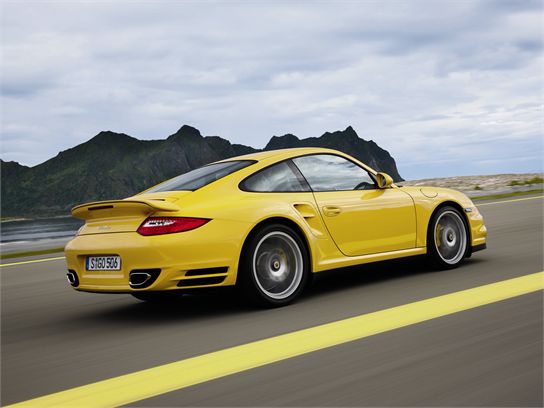
Page 2
The Porsche 911 Turbo uses a lot of technology to put the power to the pavement. Standard all-wheel drive, which is called Porsche Traction Management, helps the car dig in from a stop with minimal slip. With the manual transmission, 0-60 mph arrives in as little as 3.5 seconds. The PDK makes the car faster, cutting the time to 3.4 seconds. The available Sport Chrono Plus package includes a launch control feature for optimal wheel slip and an overboost mode that increases torque to 516 lb.-ft. for short bursts. With this package, the 2010 model is the fastest 911 Turbo ever, sprinting to 60 in just 3.2 seconds. That’s quicker than a 638-horsepower Corvette ZR-1.
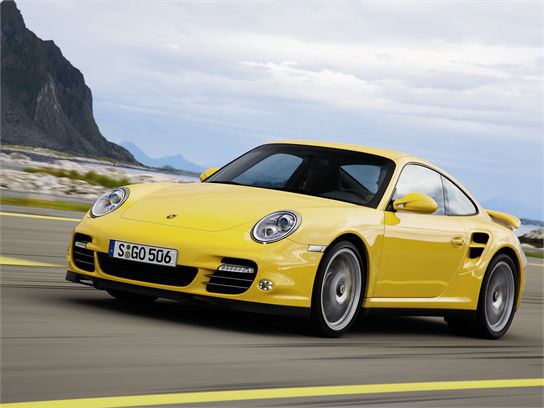
Page 2
The 2010 Porsche 911 Turbo employs three new technologies that improve handling. A new dry sump oiling system weighs about 10 pounds less than the old one and allows the engine to sit lower in the chassis, thus lowering the car’s center of gravity. Newly optional is Porsche Torque Vectoring, which cleverly applies braking pressure to the inside rear wheel in turns to help rotate the car. Also newly optional are dynamic engine mounts, which use a magnetically adjustable fluid to firm up or soften their damping characteristics. Making the engine mounts firmer creates a stiffer body/engine structure that both improves handling and prevents the engine from creating unwanted body movements over bumpy pavement. Softening the mounts during relaxed driving isolates the driver from driveline vibration.
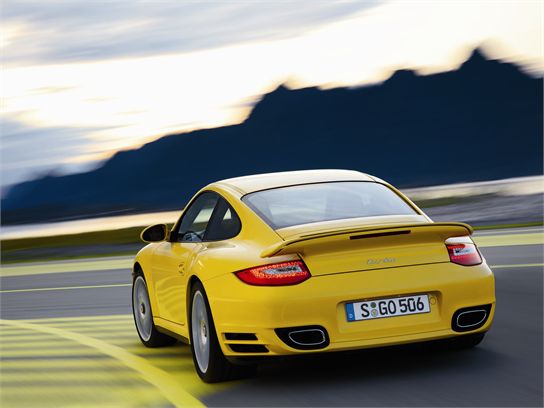
Page 2
Porschephiles familiar with previous 911 Turbos know that the rear-engine design caused the car to oversteer when pushed. Excessive turbo lag could also lead to some violent acceleration when drivers didn’t expect it. With this generation, those problems are history. Direct injection largely eliminates the turbo lag issue. However, the engine builds power most effectively over 3,000 rpm, so lead-footed drivers should still respect the boost, especially when approaching a turn. The 997 generation’s suspension and chassis improvements made the car far better balanced, reducing the rear end’s tendency to come around. And now, with a lower center of gravity, the car’s handling is even more neutral. The 2010 Porsche 911 Turbo is much more forgiving than models past.
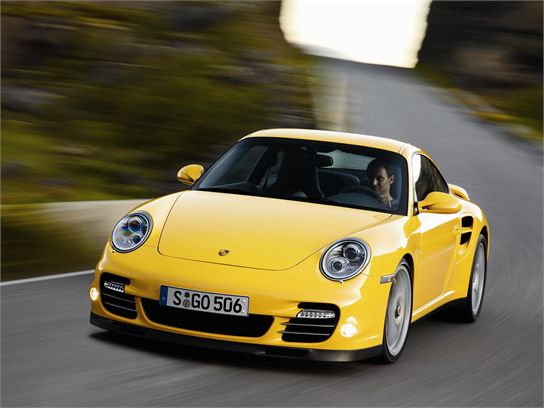
Page 2
We had the opportunity to drive the 911 Turbo on twisty roads and the Circuito Estoril, a 13-turn, 2.6-mile road course in Lisbon, Portugal. On the road, the engine is happy to toddle along at city speeds, but a stab of the throttle taps into a deep reservoir of power that makes passing a simple twitch of your right foot. On the track, the prodigious power pins you back in your seat. Ride quality is similar. In Comfort mode, the ride is firm but doesn’t beat you up. Put it in Sport Plus mode and the suspension stiffens for track use. At Estoril, the 911 Turbo reacted quickly to steering and throttle inputs, cornered flat, rotated willingly (but not too willingly!) through turns and was a general joy to drive.

Page 2
No 911 works as a daily driver and the new Turbo is no exception. Getting in requires a step down and pulling yourself out takes some core body strength. The rear seat has enough room for two small children or two sadistic adults with stubby legs. The front-mounted trunk has only 4.42 cubic feet of cargo space. You might get a couple of duffle bags up there, but even a piece of carry-on luggage might not fit. The wide, sticky tires send a lot of road noise into the cabin, and the engine note becomes a banshee howl at full throttle. Bottom line, the 911 Turbo is a purpose-built sports car that is tons of fun when you can appreciate it, but a bit of bother when you just want to relax or carry passengers or cargo.
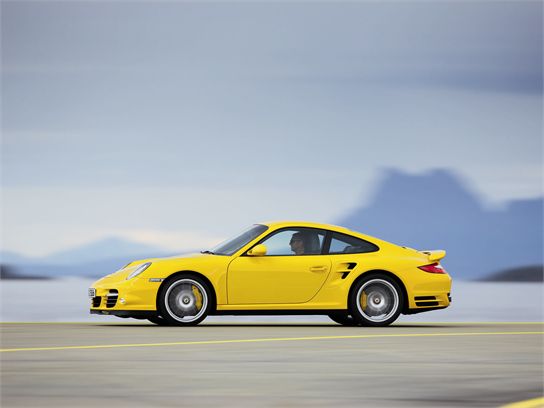
Page 2
With even more power and superior handling than in the past, the 2010 model sets a new high water mark for the 911 Turbo. While past models were excellent, this car is more driver friendly. Direct injection limits the turbo lag, and the car’s lower center of gravity makes it easier to toss around on a racetrack. Perhaps more impressive is the fact that there is room for more power. For 2010, Porsche has reduced maximum turbo boost from 14.5 to 11.6 psi. We’d estimate that with the full 14.5 pounds of boost and a few internal engine tweaks, the Turbo could reach 550 horsepower and rocket to 60 mph in 3.0 seconds or even less. It might come as a model year improvement or as an optional performance package. Either way, sign us up.
